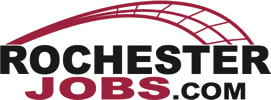A number of years ago, I wrote about the importance of your body language in conveying the message you desire (you can check out all the archived articles on the Job Search Articles & Advice page). The topic is one, however, that most do not give much thought to. It seems so much like common sense that it is easy to think that this is the least of your concerns when preparing for an interview.
I recently was engaged to film a video where I needed to speak for a few minutes on a subject. The topic was light and uplifting, and my message positive. I filmed (over the course of an hour) a dozen different versions with the idea of selecting the best one. What was amazing is the clip where I sounded the best was not usable when watching it on video. In the beginning of this version, when speaking, I had a bit of a frown/scowl on my face, which certainly was not the tone of this video. When I showed all of the versions to some people to have them “vote” on the best version, most picked up on my facial expression on this particular one.
This example caused me to reflect on a job seeker during the interview. If you are diligent, you probably have anticipated some of the questions you will be asked during the interview and have prepared excellent answers. How many people, however, actually are aware of their body language, such as their facial expressions? I would think the answer is probably very few. In my situation, I had memorized the message and delivered it just the way I wanted, but my facial expressions were just the opposite. It actually counteracted everything that I was trying to achieve.
There are a number of different types of body language actions that need to be reviewed when preparing for your interview. I have mentioned probably the most recognizable one in facial expressions, such as your eyes, eyebrows, lips, and cheeks. Probably the second most recognizable area is your hands. Your hands can serve as a useful tool to emphasize a point or express emotion but can easily be distracting to the viewer if overused. Similarly, a leg or foot can be distracting if it shakes or moves due to nerves. The position of your arms, such as having them crossed can deliver a powerful message. Finally, how you sit during the course of the interview can express as much as words. Examples include leaning in when making a point or expressing increased in the opposite vein slouching can show disinterest.
Most job seekers prepare for an interview by themselves, and most likely do it by reading through notes, researching the internet, etc. All of this will help you when verbally answering and when it is time for you to ask your own questions of the Interviewer. What it won’t do, however, is give you a read on your body language.
Rather than preparing for your interview in solitary confinement, instead do mock interviewing with another person. Stress with the other person that you want honest and specific feedback, so a Mom that thinks everything you do is wonderful won’t be of assistance with this project. Inform the other person that you want them to not only examine what you say, but also how you say it. If analyzing both is too much to do at once, then have the person on some occasions review your verbal responses and on others your body language. The goal is to not create a robot version of you, but rather to address anything you may be doing that is contradicting to your message (such as with me in my example above).
If time is short or you do not have someone readily available, then you can do the same solo by either videotaping yourself or watching yourself in the mirror. The key is to not be distracted by the camera or the mirror. The mirror especially is a challenge because you are watching yourself in real time while delivering your message. I don’t know about you, but I find it tough to do both of these tasks at the same time.
The art of body language is a difficult one to master but can prove as powerful of a communication tool as anything a person can say or write. You can take body language that conveys a diminishing, weaker message and quickly make it an assertive position of strength with a few small changes. Once you obtain the position you desire, then you can continue to use these new body language techniques to move forward in the organization.
As always, best of luck in your job search.
The following has been prepared for the general information of RochesterJobs readers. It is not meant to provide advice with respect to any specific legal or policy matter and should not be acted upon without verification by the reader.
Joe Stein
WNY Human Resources Professional
Feel free to contact Joe Stein regarding questions or comments at:
Joe Stein
